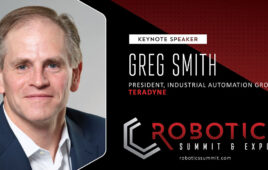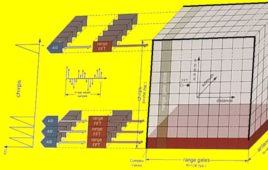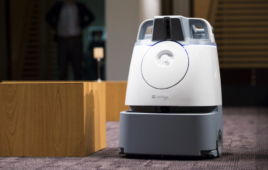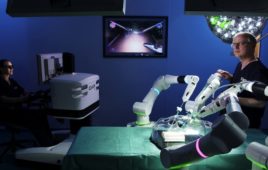
Hanplast uses automation in production “nests.” Source: KUKA
Environmental sustainability is a laudable goal, but companies need to guarantee profitability. Robotics can help manufacturers such as Hanplast sp. z o.o. reach the efficiencies needed to accomplish sustainable development.
The Polish company was founded in 1993 and is a leader in plastics processing, injection molding, and photovoltaic panels. Hanplast offers its customers services including product design, construction, and production launch. It is also a leading maker of Smart Wire Connection Technology for solar modules.
Hanplast’s factory in Bydgoszcz, Poland, is in a facility previously owned by Zachem Chemical Works. The manufacturer uses 10,000 square meters (32,808 sq. ft.) of its own solar panels to help supply energy.
Challenge
Like many manufacturers worldwide, Hanplast faced a labor shortage, so maximizing productivity was a must. The Bydgoszcz facility makes several machines, including a labeling machine for home furnishings.
 “At this workstation, we pack approximately 2,400 items per hour, which are packed in packages of 10 pieces,” explained Robert Powalisz, head of the Technology Department at Hanplast. “Without automation, two operators would be needed to handle this process.”
“At this workstation, we pack approximately 2,400 items per hour, which are packed in packages of 10 pieces,” explained Robert Powalisz, head of the Technology Department at Hanplast. “Without automation, two operators would be needed to handle this process.”
“We had to automate the labeling workstation for several reasons,” he added. “Labor productivity was really the main one.”
Another challenge was ensuring that the labeling process was repeatable.
“If we are talking about processes that last, for example, 20 seconds, repeatability is the key,” Powalisz said. “That is the case with labeling. Every second counts there. A second can be associated with a specific profit or loss.”
Solution
Hanplast has used automation, such as injection molding machines for processes related to logistics, for more than a decade. Today, the company has numerous pieces of equipment supported by qualified workers, but it needs to maintain productivity and quality.

Agilus series robot working in a Hanplast factory. Source: KUKA
The company has turned to robots from KUKA AG to build three machines at its factory in Bydgoszcz. Each robot is at the center of a production nest, including one for the labeling machine.
In the labeling workstation, an integrated arm places finished elements of home furnishings on special loading buffers. The buffers are automatically sent to the workspace of the KUKA robot, which takes exactly 10 pieces and passes them on to be labeled.
Labeled products the go to the loading container, and finished products go to key Hanplast clients. Human operators are still in the loop, supervising and packing the production lots.
Results

Hanplast has been roboticizing its factory for more than a decade and plans to continue. Source: KUKA
KUKA’s robot arms have helped Hanplast maintain productivity amid workforce constraints. The manufacturer plans to expand its use of robotics.
KUKA this week also announced a slimmer, modular version of its KR QUANTEC arms for easier customization and setup. They have a payload capacity of 120 to 300 kg (264.5 to 661.3 lb.) and a maximum reach of 3,100 mm (122 in.). The new version has an upgradable payload capacity, shorter stopping distances, a customizable working range, and “motion modes.”
The “path mode” is intended to allow for increased accuracy and precision, and the “dynamic mode” is faster to reduce cycle time. The KR QUANTEC is used in automotive assembly lines, foundries, and medical laboratories, among other applications. The updated model will begin to be available in April.
Filed Under: The Robot Report, Robotics • robotic grippers • end effectors





Tell Us What You Think!